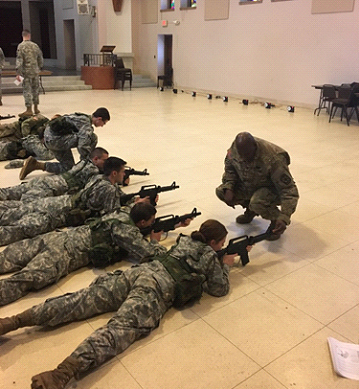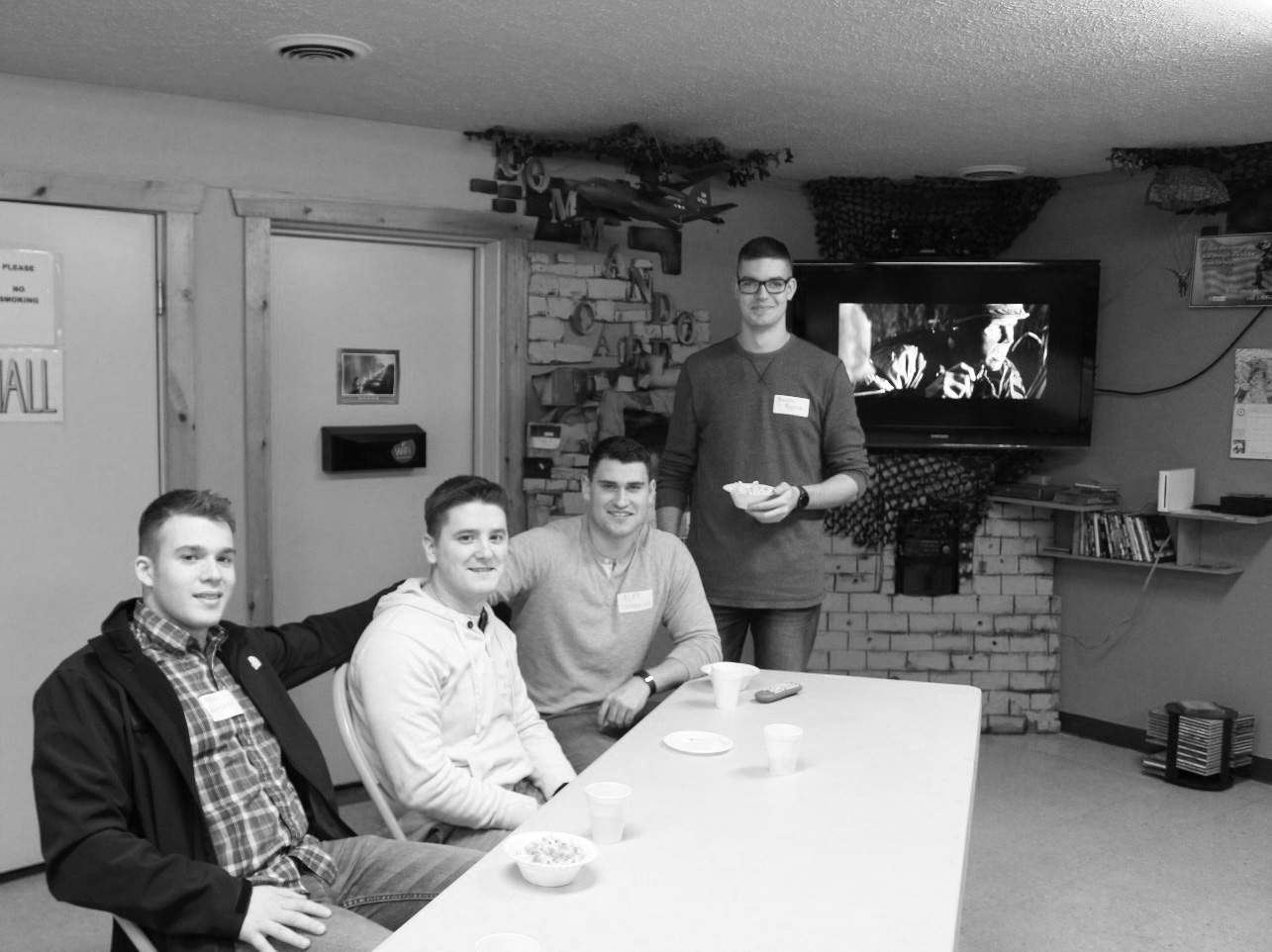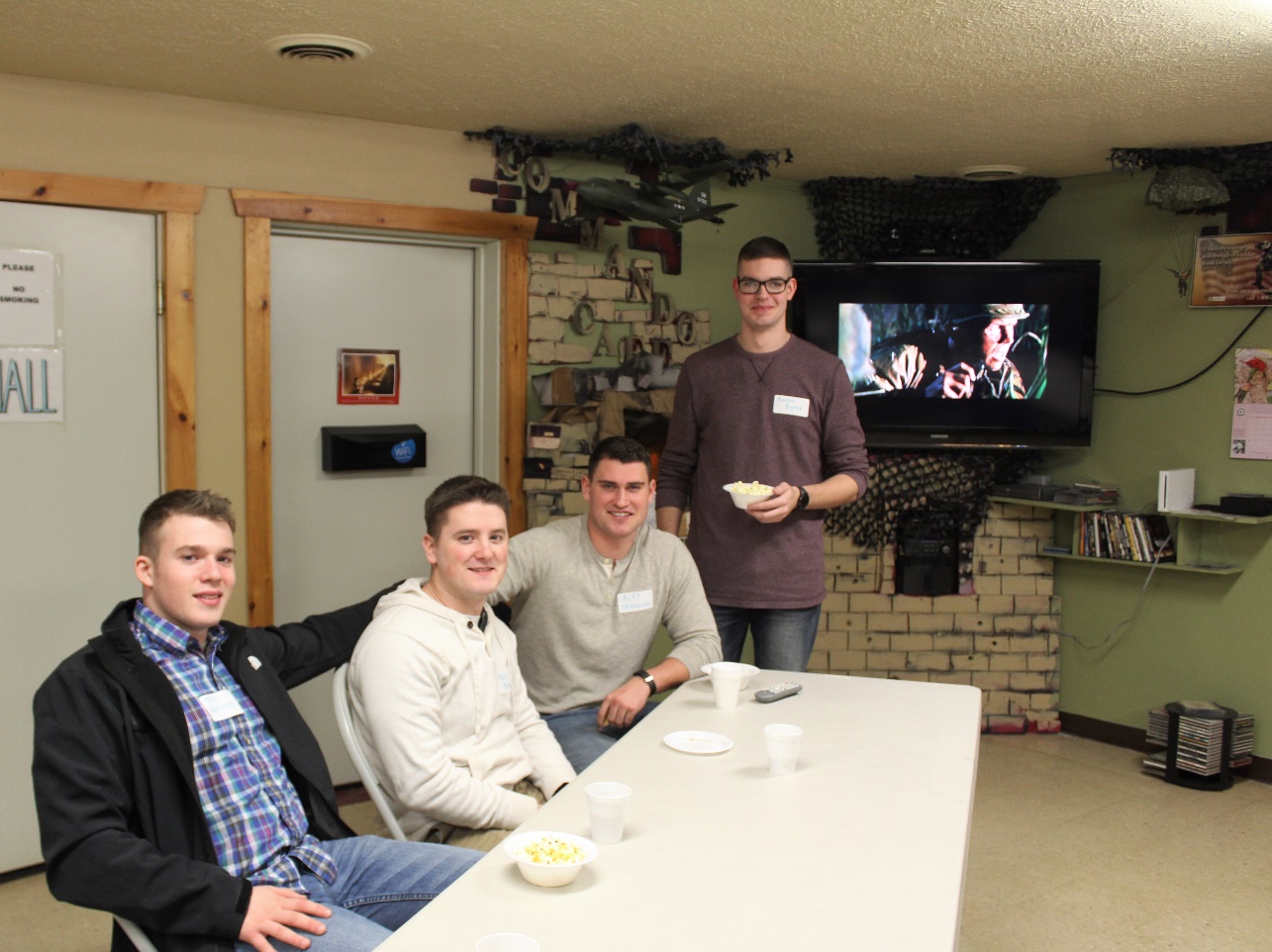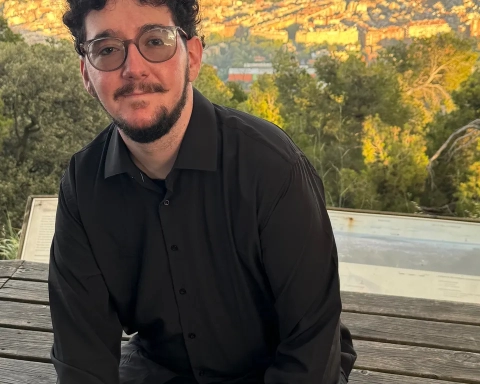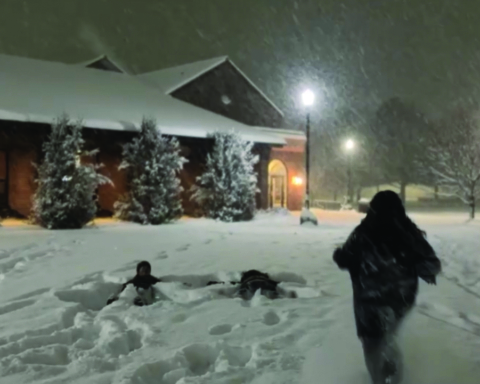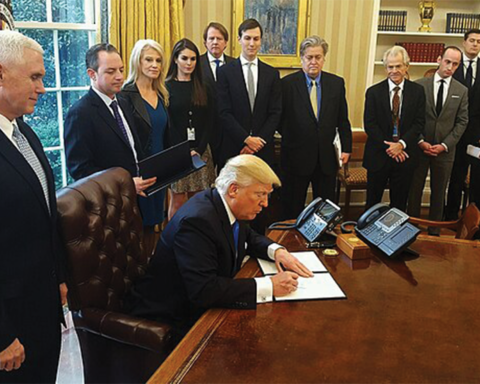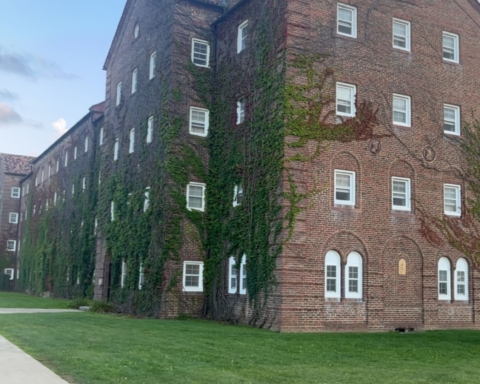By Harley Anderson
Contributing Writer
The Seneca Battalion Army ROTC learned how much skill is required in successful marksmanship at a Military Science lab held in Francis Hall last Thursday. The Basic Rifleman Marksmanship (BRM) training, led by Cadets Breandan Cunningham, junior accounting major, and Aaron Byrne, senior sports medicine major, introduced cadets to weapon safety and handling.
Using replica models of M-4 carbines, cadets first learned the different parts of the weapon and how they work. From there, they worked on techniques including positioning, breathing, trigger squeeze and sight alignment. Cadets learned to shoot from positions including the prone supported, prone unsupported and kneeling, which offer different advantages based upon tactical situations and available cover. All of these techniques are critical for accuracy when using the weapon in combat.
Throughout the class, weapon safety was a priority. Cadets learned the four main safety precautions: know your target and what is beyond it, never aim at something you do not intend to shoot, treat every gun as if it’s loaded and keep your finger off the trigger until you intend to shoot.
New technology also improved training, as cadets were introduced to a digital target system.
This allowed cadets to test their aim, as a digital laser would show if the target was hit.
Cadets practiced trigger discipline while balancing dimes on the barrel of a paintball gun and pulling the trigger.
The goal was to keep the dime from falling, made possible by applying the fundamentals of marksmanship: steady and controlled breath, careful sight alignment and positioning of the weapon in the shooter’s grip and finally proper trigger control.
Even the slightest failure to apply these skills could result in the dime falling, or in the real world, a missed shot.
These skills will be applied when cadets reach Basic Camp, where they will be tested on their performance.
To qualify, cadets must assemble and operate a weapon and hit 23 out of 40 targets at ranges from 25 to 300 meters.
Marksmanship training is important, according to Cadet Jacob McCollum, senior journalism and mass communication major.
“All of those practiced skills have to be applied effortlessly and automatically in order to ensure accurate shot placement in combat situations,” he said.
By learning these skills, cadets will be prepared and successful in their future training to be Army officers.
To learn more about the Seneca Battalion, email recruiting officer Captain Jared Kausner at jkausner@sbu.edu and follow st_bonas_army_rotc on Instagram.
andershv16@bonaventure.edu

